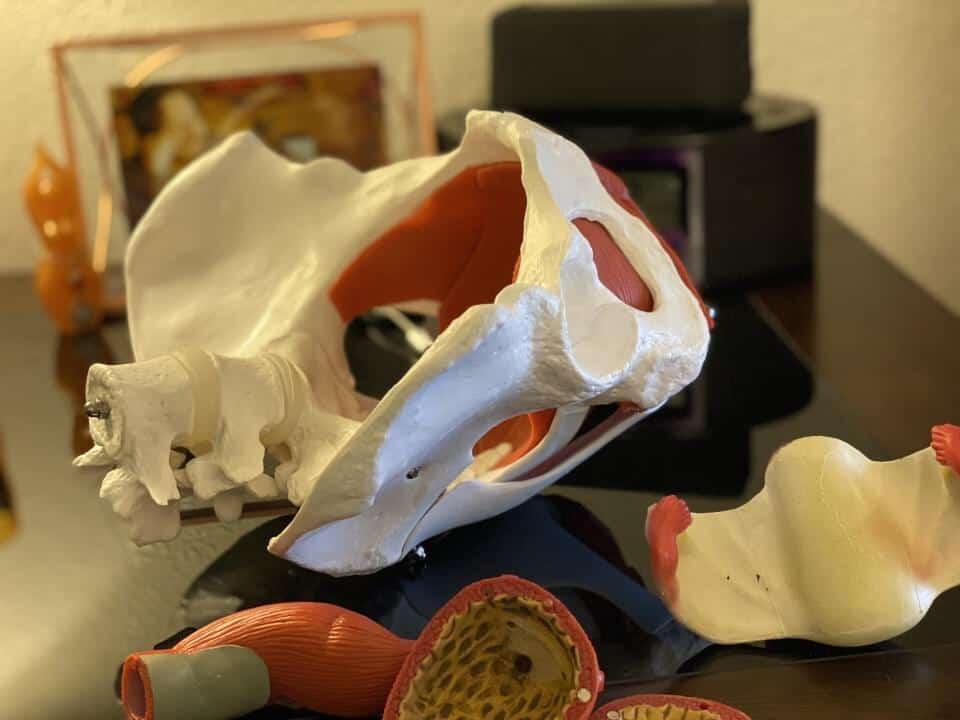Countless times while working with my pelvic dysfunction patients, I have witnessed that while releasing their fascial restrictions vaginally, the patient’s jaw will be moving ever so slightly from side to side, presumably shifting to find it’s new home and mirror it’s counterpart. Of course, I point out what I see so that my client has a better awareness of how the pelvis and jaw are intimately related. To me, this isn’t strange to see as I am keenly aware of the mechanical connection between the two. Most people though, are a bit surprised by the fact that these opposite-ended body parts have any relation at all.
Despite their being on opposite ends of the body, a few studies done by dentists and physiotherapists show evidence that improvement in mobility of the jaw can somehow unleash tension in the pelvis and vice versa.
How could these two very different ends of the body be connected? What might be the reason one body part is mirroring another so closely? It might seem illogical or bizarre, but there are actually a few reasons that might explain the connection:
1. Embryological Development: The connection begins during embryologic development at around day fifteen. In this stage, called gastrulation, two depressions form on the dorsal side of the embryo which become the oropharyngeal membrane (goes on to form the mouth) and the cloacal membrane (goes on to form the openings of the urinary, reproductive and digestive tracts). The spine grows between them and the two remain connected from their early beginnings as one being in the embryo.
2. Emotions, Our Avenue of Expression: Both the jaw and pelvis are known to be our avenues of expression – on physical and verbal levels. Think about what happens to your jaw when you are holding back from expressing yourself. Suppressed anger, fear, and negative emotions can cause you to clench and grind your teeth, or build stress in the jaw. Similarly, think about what happens to your body when you are in a stressful situation, can you feel your abdomen and pelvic floor muscles tense up, or your buttocks clench? Years of sexual repression and unspoken feelings can be held in the body as tightness and pain.
3. Fascial Connections: Fascia is the connective tissue that supports and connects every cell, muscle fiber, nerve, blood vessel, and organ. It provides support and mobility for our entire body. A fascial line can be traced from the jaw down into the pelvis.
4. The Cranial Sacral Connection: Another notable connection between the jaw and pelvis is concerned with the biomechanics of the cranial bones and the dural tube, which is a dense sheath of connective tissue that houses the brain, spinal cord, and cerebrospinal fluid. Tensions and imbalances in the jaw can have an effect on the membranes connecting the dura to the skull and affect where it is tethered below in the sacrum. Uneven pressures and pulling in the sacral area can, in turn, affect the cranial attachments and lead to pain, dysfunction, and other symptoms on either end of the craniosacral system. This uneven distribution can cause a multitude of symptoms across all body systems – from your cardiovascular to your neurologic, musculoskeletal, gut, and on.
Do you feel it?
Are you someone who suffers from: TMD (Temporomandibular joint disorder), jaw tension, clenching, grinding, pain, jaw locking or clicking? Do you also happen to have pelvic, lower back, SI joint, or sacral pain and dysfunction? Perhaps you may not have notable pain or tension in the pelvis, but you may experience bladder/bowel problems or sexual dysfunction. If you have one or the other but not both, you may want to pay closer attention to your mechanics. Is your left hip restricted with mobility? And if so, is your left jaw a little tighter? If you answer yes to any of these situations you may want to focus on relaxing your jaw and your pelvis. If your symptoms are on the mild side you may be able to do a few simple stretches and self care as seen below.
1. Relax the pelvic floor musculature: Come into a low squat as if you are going to poop in a hole in the ground. This pose is a known yoga pose called Malasana. If your ankles are too tight, you may need to roll a yoga mat to rest your heels on and place your feet on a downward incline. Keep hands in prayer position and try to stay in the pose for 2-3 minutes focusing on relaxing the perineum and breathing.

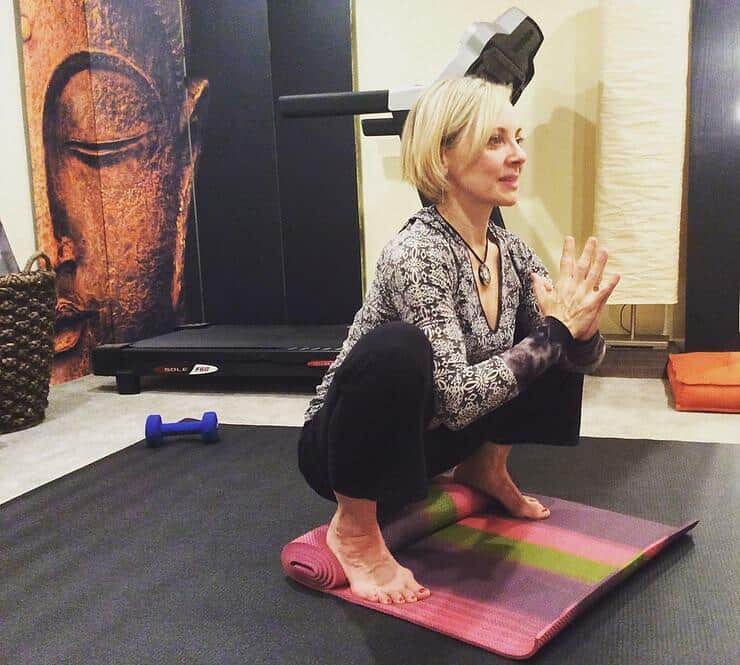
2. Cat Cow (with tongue out): Doing the familiar Cat-Cow exercise on hands and knees, breathe in to arch the back, raising the tail bone up and spreading the sit bones wide.The action of the sit bones widening will lengthen the pelvic floor muscles. Do this while sliding the shoulder blades together, looking up and sticking the tongue way out. Then gently contract the abdominal area to round the spine so the tail is tucked under while exhaling. Try 5-10 slow repetitions to start, repeat 2-3 times per day.
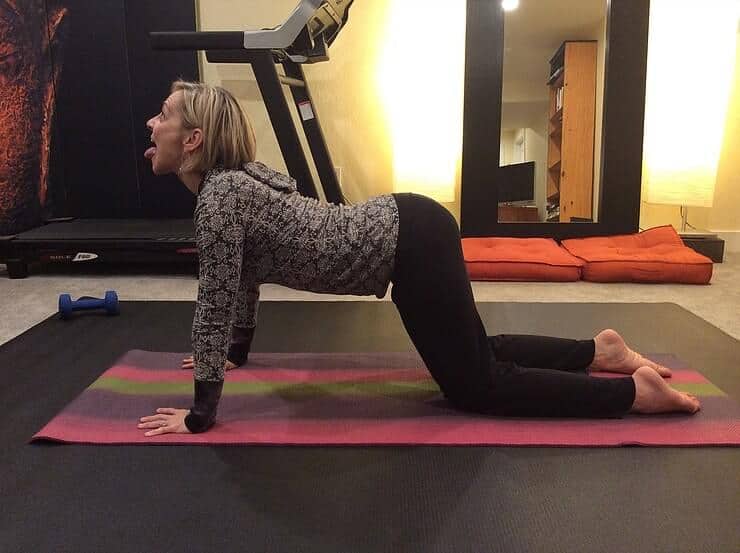
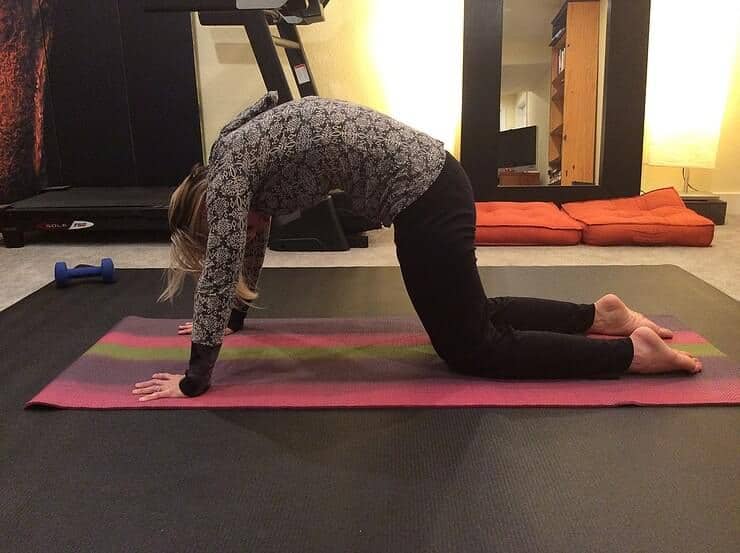
3. Deep breathing with tongue resting position: Lying on your back, with your arms at your sides, gently place your tongue behind your front teeth to relax the jaw and take four big full breaths, think of something that makes you happy or grateful.
4. Release the fascia of your feet: Standing upright, using a tennis ball or a pinky ball, which is a bit more firm, place almost all your body weight on the ball resting under the bottom of your forefoot. Keep firm pressure there while the other foot remains flat on the floor to support you. Hold the wall for balance. Maintain pressure until the tension on the foot decreases and the foot melts more over the ball, then move the foot forward so the ball goes toward the arch of the foot. Repeat the sequence for 1-2 more spots until the ball ends up on the heel.
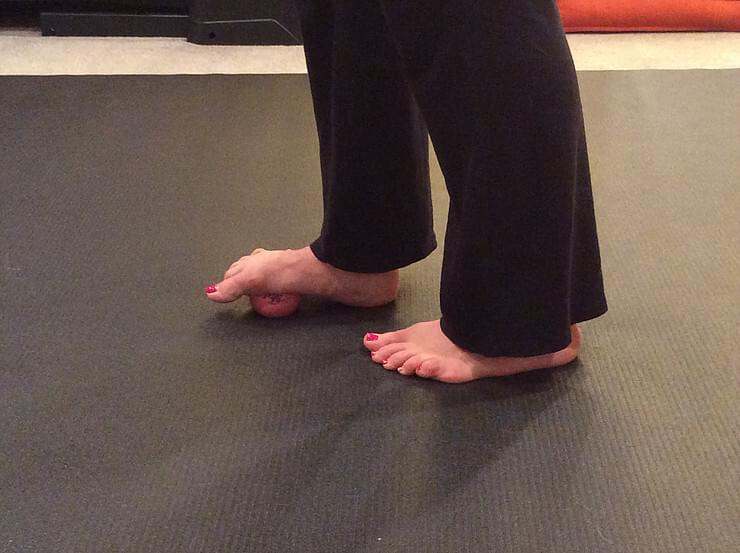
Walk around and feel the difference between sides. Pay attention not only to your feet, but also to the hips and pelvis. Then repeat on the other foot.
If these exercises have helped, but not enough, it might be time to seek treatment. At Align PT, we are skilled in a holistic integrated approach and offer a variety of manual techniques and practices to help you address whole-body health which includes both your jaw and pelvis. Thorough evaluation helps us determine which body region is the culprit/s and which are reactors. Treating the reactors and not the culprit will only exacerbate your pains.
With a deeper understanding of what is contributing to your pain patterns we can release the restrictions in the proper areas and teach you new movement strategies to help make lasting changes.
If you’re in the Denver-Boulder area, call us for a Free Consultation at 720-204-6546.
Or anyone can sign up for a free strategy session for the FeminEnergy Program.
If you’re located elsewhere and are in need of manual physical therapy, we suggest you look for practitioners who have a good working knowledge of the pelvic floor, as well as craniosacral, visceral, and myofascial training.
Here is a list of good resources if you’re not in our area and looking for help:
https://www.iahp.com/pages/search/index.php – Look for people skilled in Visceral manipulation (VM and NM track) and CS craniosacral
https://learnwithdianelee.com/find-a-practitioner/ – Integrated Systems Model
https://pelvicrehab.com/?utm_source=hwdotcom&utm_medium=mainmenu – Pelvic Health Specialists
References:
Influence of the Temporomandibular Joint on Range of Motion of the Hip Joint in Patients With Complex Regional Pain Syndrome
Fischer, Michael J. et al.
Journal of Manipulative & Physiological Therapeutics, Volume 32, Issue 5, 364 – 371
The Relationship between the Pelvis and Stomatognathic System: A Position Statement
Blum, Charles
http://www.drcharlesblum.com/About%20Us/TMJ%2520and%2520SI%2520Joint.pdf

